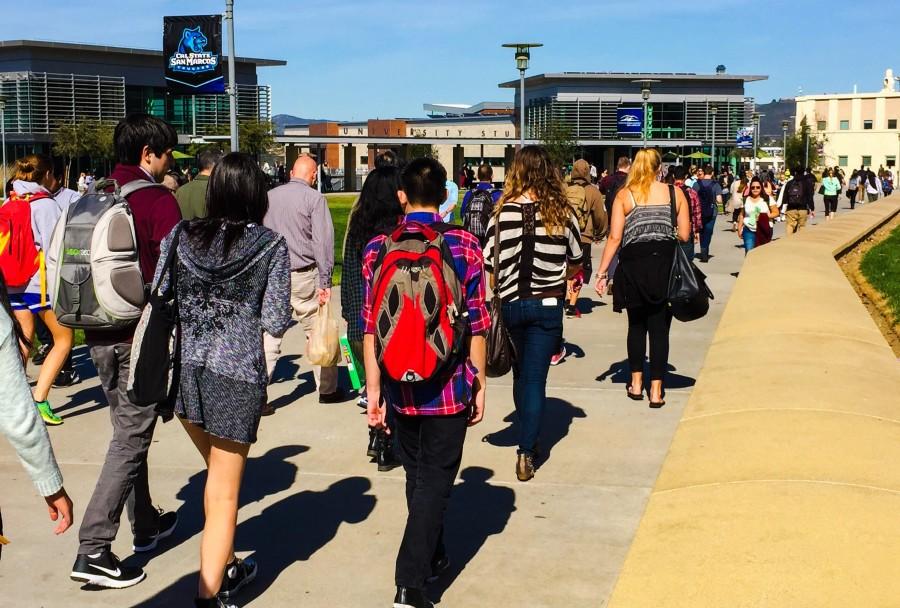[author title=”About the Author” author_id=”24″]
By Katlin Sweeney
With many students finding themselves waitlisted for classes that they need in order to graduate or continue in their major, the Student Access Initiative is being considered for possible implementation next spring.
The Student Access Initiative (SAI) proposes a shift in course scheduling to accommodate the rapidly growing student populace, which totals 12,152 students as of last semester. This reflects a large growth in student enrollment since fall 2013, when the campus population totaled 10,610. The SAI would restructure campus schedules so that some three unit classes would shift from twice a week, 75 minute blocks to 50 minute blocks, three times a week.
According to data provided by the Office of the Registrar and Reporting and Data Analytics Repository, the spring 2015 semester had 516 courses with students on the waitlist. Vice Provost, Dr. Kamel Haddad, explained that the SAI is a necessary move for the campus so that students can get the classes they need in order to graduate sooner rather than later.
“We are increasing by 100 courses a year, so either we open the classes and serve the students or we don’t,” Haddad said. “If we accept the premise of opening classes, the question is not whether or not we come to campus on Fridays, but how we come to classes on Fridays.”
While some students have opposed the SAI because of the increased amount of Friday classes, Haddad said that the new time blocks do not require students to be on campus five days a week. What the SAI provides is a higher number of course sections with a variety of time slots, giving students more options when scheduling their time on campus.
“We are growing and we do have available space; this is a fact. However, that available space is in the evenings after 5 p.m. and on Fridays,” Haddad said. “But even if we begin utilizing evening time slots after 5 p.m., we can only accommodate the surplus of students for maybe a year or two. That is not enough time to get a new building, which means that if we are going to serve the students that are coming to CSUSM, we must use Fridays as well.”
The ASI Board of Directors (BoD) passed a resolution of support for the SAI in December. However, there were mixed reactions from Academic Senate members last semester as to whether or not they should also endorse its implementation on campus.
“There are a lot of questions and concerns from faculty and staff as to how these scheduling changes will affect them and these classes,” Academic Senate Chair, Dr. Laurie Stowell, said. “It is especially a large change for department chairs when they are creating schedules.”
It is not required that the SAI be supported by ASI BoD and the Academic Senate to be implemented on campus. However, Dr. Haddad and the Office of the Provost are looking to gain support from both groups before making a decision as to whether or not to to move forward with it. This semester, the Academic Senate will decide whether or not they will pass the resolution of support after all.
“There was a first reading of the Student Access Initiative for discussion at our February meeting,” Stowell said. “At our March meeting, there will be a second reading to take action and vote.”
If the SAI were to receive Senate endorsement in March, it is likely that the proposal will be implemented in the spring 2016 semester.
“The campus is already creating the fall 2015 schedule, so the Student Access Initiative would not be implemented for next semester,” Stowell said. “It is easier with scheduling to integrate it into the spring because there are less class sections happening in that semester than in the fall. It gives the campus a little more time to adjust.”
The Academic Senate will make its decision on Wednesday, March 4. Senate notes from each meeting are accessible at http://www.csusm.edu/senate/meetings/acad2014.html.


